Vectrex
Top 10 Best Vectrex Games of All Time!
The Vectrex is truly one-of-a-kind. While most video games console hook up to standard television sets, the Vectrex has its own integrated CRT. Control circuits allow the 9″ monochrome screen to function as a vector display, which makes it possible for the system to draw and manipulate lines instead of relying on pixel-based raster images. (Every Vectrex game also came with its own translucent overlay that could provide the illusion of color.) Vector graphics were occasionally used in arcade games in the late ’70s and early ’80s, but the Vectrex was the first (and only) home console built around the concept. The Vectrex was developed by Smith Engineering and released by General Consumer Electronics in November of 1982. The initial sales were strong enough to catch the attention of Milton Bradley, who promptly acquired GCE. Milton Bradley brought the Vectrex to Europe and partnered with Bandai for a Japanese release. Despite its unique capabilities, the Vectrex fell victim to the great video game crash and was ultimately discontinued in 1984. Fewer than 30 games were officially released on the system, but an active homebrew scene has helped keep the Vectrex alive. We’ll only be looking at the official releases, however, as this list is intended to be a snapshot in time.
10
Fortress of Narzod
1983
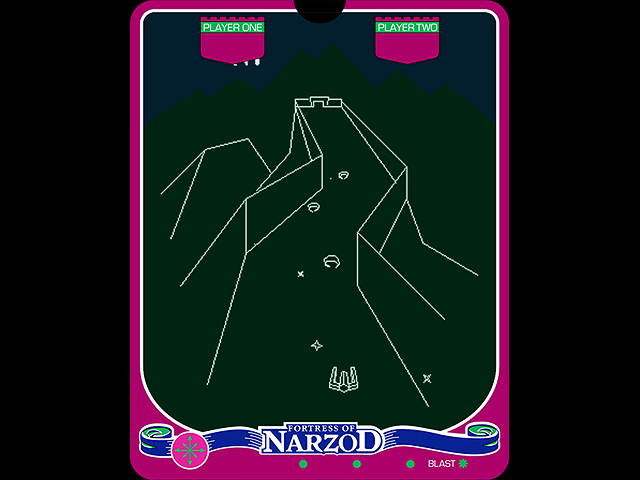
This list is almost entirely comprised of arcade ports and brazen knockoffs, but Fortress of Narzod was designed specifically for the Vectrex. This is probably why it’s slept on. (It doesn’t even have it’s own Wikipedia entry!) While most shooters from the era are set in the vast openness of outer space, Fortress of Narzod takes place within narrow canyons. The game gives players control of a hovercraft and bombards them with waves of hostile creatures that descend from the mountain summit. You can’t mindlessly blast away at them, however, since bullets will ricochet off the canyon walls. If you’re not careful you’ll only succeed in destroying yourself! The enemies are relentless so you don’t have a lot of time to angle your shots, but it feels rewarding when you line things up perfectly. You can only shoot straight forward and your movement is restricted to the bottom portion of the screen, but you can still nail your adversaries in the back by making use of the walls. Enemy bullets will bounce off the walls too, however, so there’s an incentive to eliminate your zig-zagging opponents as quickly as possible. Fortress of Narzod can only be played on the Vectrex, and it does a great job of showcasing the system’s strengths. (The explosions are especially impressive, and I love the way things break up into little pieces when they’re destroyed.) It’s a shame that a console as unique as the Vectrex didn’t have more exclusive content.
9
Star Castle
1983
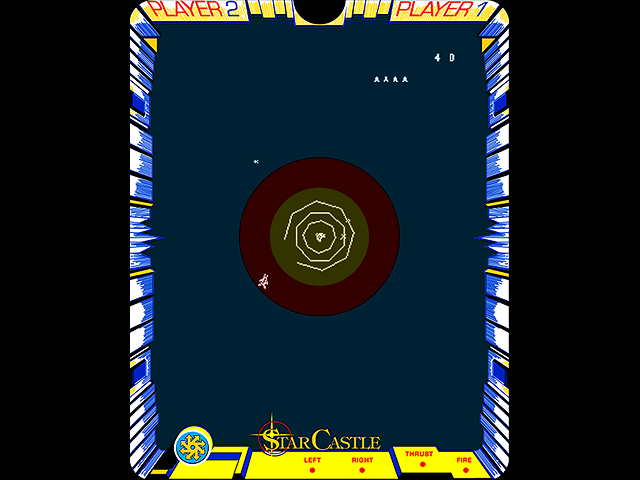
When arcades were the driving force in the industry, it was of the utmost importance for video games to be fun from the get-go. That’s why Star Castle is such an enigma. I didn’t enjoy it at all when I first played it. It’s a standard multidirectional shooter with a top-down perspective, but it’s ridiculously challenging. The object of the game is to destroy an ominous fortress that sits in the middle of the screen. This is easier said than done, however, since the fortress is protected by a rotating shield. The barriers will regenerate after being destroyed, so you have to act quickly. Also, the shield has multiple layers that rotate in different directions. Before you’re able to break through all of the shields, you’ll likely be destroyed by guardian drones. The fortress also bombards you with heat-seeking missiles throughout the entire process, so you always have to be moving. Star Castle was released as an arcade game in 1980, but I think it’s more appropriate for a home console. The learning process wouldn’t have been much fun if it was costing me 25 cents per play. I’m glad I didn’t give up on Star Castle, though, as it’s arguably the most intense game on this countdown.
8
Armor Attack
1982
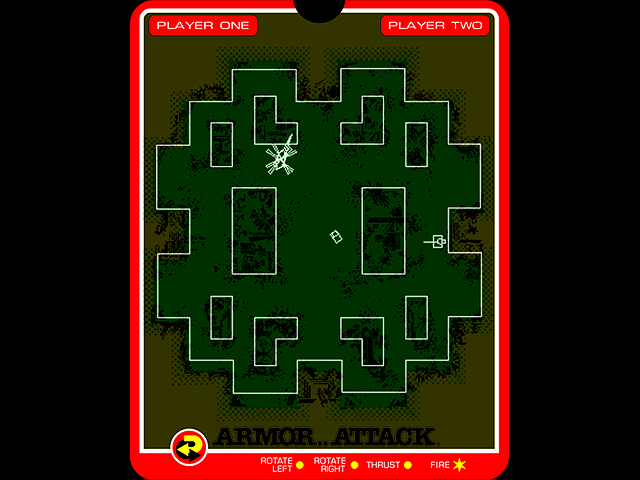
Multidirectional shooters were all the rage on the Vectrex, and many of them are being recognized on this countdown. Most of these games revolved around interstellar combat in some capacity, but Armor Attack keeps things grounded. In lieu of alien invaders, players have to eliminate waves of helicopters and tanks. To that end, they’re given control of a basic jeep that’s equipped with a not-so-basic rocket launcher. Games like Space Wars are defined by vast, open star fields, but Armor Attack is decidedly more restrictive in its approach. There are right angles everywhere, and the playing field has ten different buildings to maneuver around. The obstacles can potentially work to your advantage, but they also provide cover for your enemies. Fortunately, the controls are remarkably precise. Your jeep can turn on a dime, and the game also has dedicated buttons that allow you to fine-tune your shots. (The joystick works great for broad motions, while the buttons are ideal for situations where you’re just a few degrees off your mark.) Armor Attack is not for everyone, and the action feels repetitive after a while. The co-op mode is twice as much fun as the single-player campaign, however, so you’ll want to track down a second controller (and a friend) in order to get the full experience.
7
Web Wars
1983
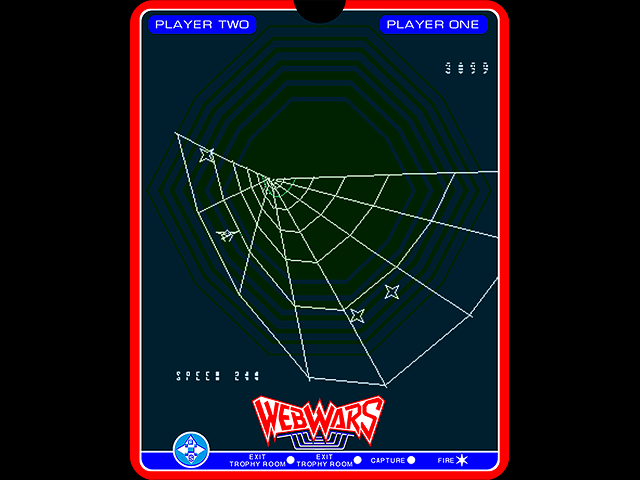
Web Wars was one of the last “official” games released on the Vectrex, and it shows. It’s arguably the best looking game on the system! The events of the game unfold on an elaborate three-dimensional web that could be likened to the stages from Tempest. The similarities to Atari’s classic shooter end there, however. In Tempest, you shoot your enemies from afar and wait for them to come to you. In Web Wars, players are constantly flying forward in pursuit of mythical creatures. The camera shifts from side to side as you work your way through the web, and this results in a cool 3D effect. The graphics are especially impressive when the pace picks up. You’ll spend a lot of time blasting guardian drones and evading cosmic dragons, but the main objective is to abduct fantastic beasts with a “capture rod” and put them on display in your trophy room. (The premise sounds pretty scandalous, but it’s no worse than Pokémon. At least you aren’t forcing the creatures to fight against each other!) Web Wars is an imaginative game, and the abduction mechanic was ahead of its time. Amassing a collection of creatures is more fun than racking up an arbitrary score.
6
Pole Position
1983
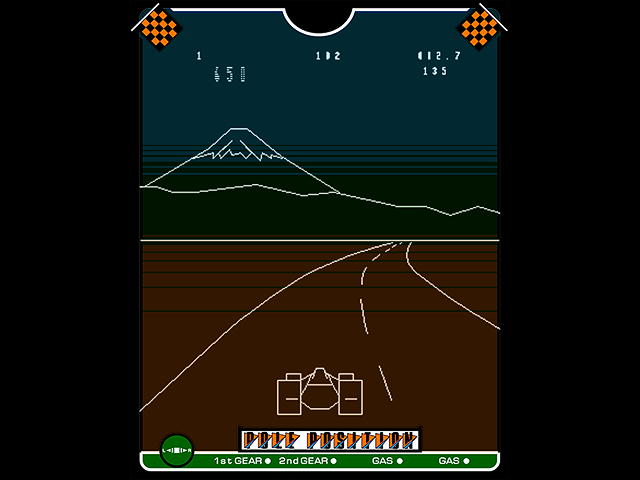
The Vectrex library featured a number of arcade ports, but none were bigger than Pole Position. Namco’s take on Formula One was the most influential racing game of the classic era, and it inspired countless imitators in the early ’80s. (The game saw success on both sides of the Pacific, and it even inspired a Saturday morning cartoon!) The Vectrex port uses a pseudo-3D perspective like the arcade original, and the sense of speed is legit. The scrolling landscapes are surprisingly smooth, and there is an impressive number of opposing cars on the track. The obligatory qualifying laps feel relatively empty, but it’s thrilling to weave in and out of traffic after you make it to the Grand Prix. It’s obviously not as colorful on the Vectrex as it was in the arcades, but this is somewhat mitigated by the included overlays. All things considered, Pole Position is an effective showcase of the system’s capabilities. The game was ported to nearly a dozen platforms in the early ’80s, but the Vectrex version still felt like it had its own identity. If nothing else, Pole Position is a nice change of pace on a console that was largely defined by multidirectional shooters.
5
Space Wars
1982
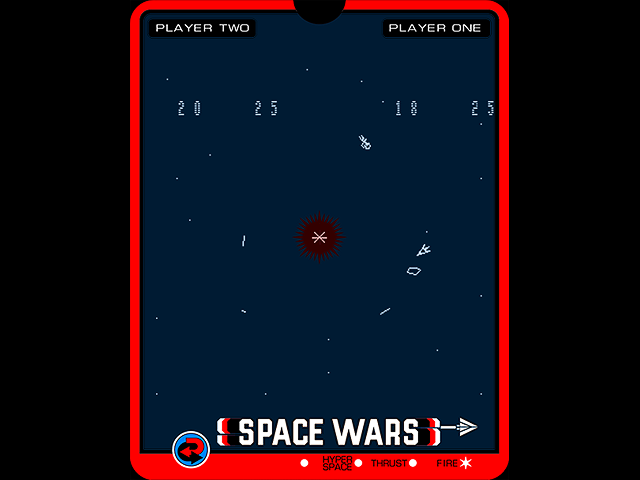
Space Wars is a port of a 1977 arcade game that was known for its use of vector graphics. The game is designed for two players who are pitted against each other in interstellar dogfights. In order to destroy their opponents, players can rotate their ships, fire lasers, and engage their thrusters. They can also engage hyperspace and instantly be transported to a random point on the playfield. The battles take place within the gravity well of a nearby star, so maneuvering around the screen is easier said than done. The Vectrex port stays faithful to the arcade original in most respects, but the game feels more claustrophobic since the playing field isn’t nearly as large. The home version improves upon the arcade in other areas, however. Most notably, the Vectrex lets players compete against a CPU-controlled opponent. Extra Vectrex controllers can be fairly expensive, so this option is greatly appreciated even if it’s not necessarily the preferred way to play. If you want to get the most out of the game, prepare to sit shoulder-to-shoulder with a friend while you huddle around the Vectrex screen. Space Wars was released in the arcades five years before the Vectrex port, but the concept is much older than that. The game was actually based on a 1962 program called Spacewar! that was developed by computer scientists at MIT. The foundation for Space Wars was in place 20 years before the Vectrex hit the market, and that speaks to the timelessness of the game.
4
Scramble
1982
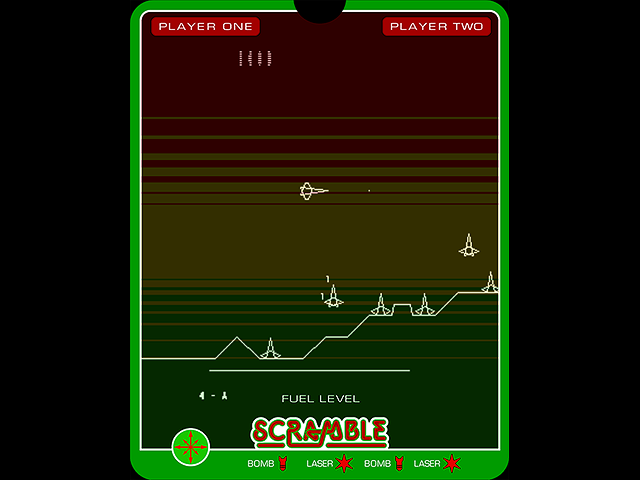
Scramble is a port of a 1981 arcade game that made a big impression on the industry. It was one of the earliest side-scrolling shoot ’em ups, and the first to feature distinct levels. While other games (like Defender) typically had endless gameplay loops within a single stage, Scramble was divided into separate levels with their own topography and obstacles. Players can blast away at oncoming enemies or drop bombs on targets below, and they’ll also have to keep an eye on their fuel gauge and avoid collisions with the uneven terrain. It can feel pretty relentless at times, so it’s fortunate that the controls are so responsive. This is especially important when you’re navigating through tight corridors. The Vectrex version obviously isn’t as colorful as the arcade original and it lacks the multiplane backgrounds, but it’s a great port nonetheless. There are plenty of shooters on the console, but Scramble feels completely different than the rest of them. Scramble created the foundation that Gradius was built on, and it holds an important place in gaming history as Konami’s first worldwide hit.
3
Rip Off
1982
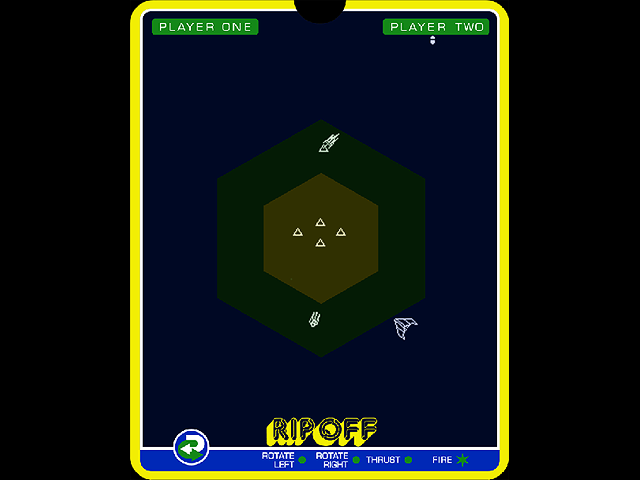
Rip Off is a multidirectional shooter that was originally released in the arcades. This description could apply to half of the games on this list, but there are a couple of reasons why Rip Off is different. Most games in the genre challenge players to achieve a high score, but Rip Off isn’t merely a game of self-survival. Instead, players are tasked with protecting fuel canisters from their enemies. Waves of invading tanks will swarm the playing field in an attempt to steal the resources, and you’re expected to stop them by any means necessary. You can blast them out of existence if you so desire, but running into them can be just as effective in the right situation. It will take a moment to respawn if your ship is destroyed in the process, but the only penalty is time. You won’t have to worry about running out of lives, and the only way to lose is for all of the canisters to be stolen. There are six different enemy types to be mindful of, and they’ll employ various strategies against you. (They’ll even work together in an effort to lure you away from your duties!) Rip Off provides an intense single-player experience, but its two-player mode allows for more strategy and planning. The 1980 arcade version was the first shooter with cooperative gameplay, and the concept was still considered novel when the Vectrex port landed two years later.
2
Mine Storm II
1982
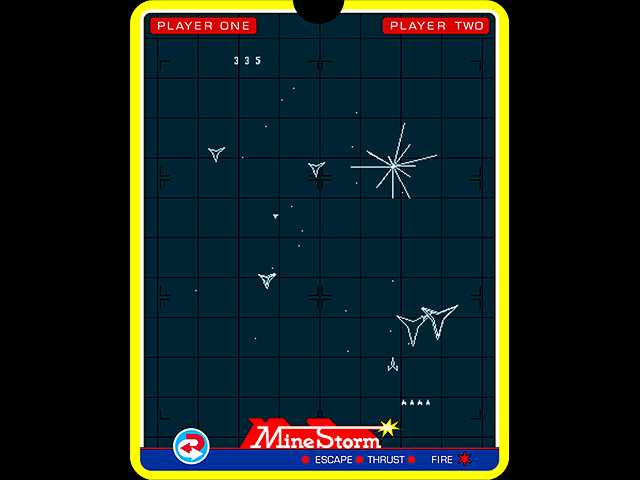
In Mine Storm, players fly a ship around in outer space while destroying myriads of mines. This is easier said than done, however, as the mines will break apart into smaller pieces after they are obliterated. Things become increasingly more complex as you progress through the game, as you’ll eventually have to deal with magnetic mines. Some mines even shoot fireballs! Players are free to fly in any direction, and there’s also a contingency plan for emergency situations. If things get too dicey, the escape function will quickly warp players to a random spot on the screen. The game is remarkably similar to Asteroids, and I understand why the folks at GCE borrowed so heavily from Atari’s arcade classic. Asteroids is the most iconic vector-based game of all time, after all, and the Vectrex was designed around its vector display. Mine Storm was such a great fit for the console that it was built into the system! (In this capacity, it’s literally a “must have” game.) Unfortunately, early revisions had a programming bug that caused the game to crash on the thirteenth level. This was an era before day-one patches, so players that contacted the publisher were sent Mine Storm II free of charge! The sequel was essentially an updated version of the game that fixed the aforementioned bug, and most people were unaware that it even existed. Mine Storm was the most common game on the console (due to it’s built-in nature), and its sequel is the rarest. The original Mine Storm was eventually updated for newer revisions of the Vectrex hardware, which puts it on an even keel to the sequel. Mine Storm II came on a cartridge, though, which makes it the only “fixed” version of the game that can be played on every Vectrex.
1
Solar Quest
1982
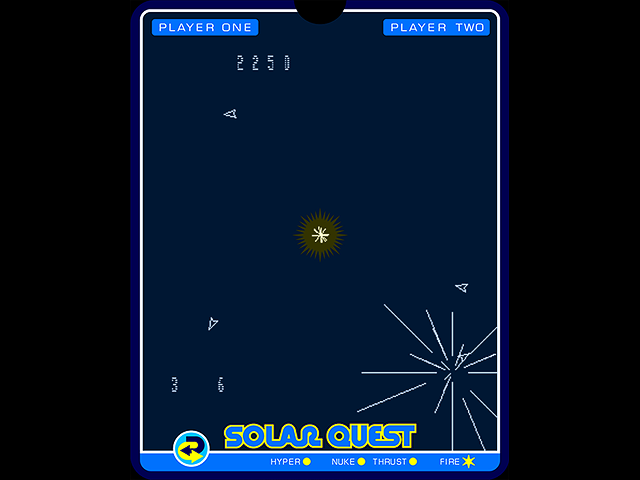
If you’ve read the entries for Space Wars or Mine Storm II, then you already know what to expect from Solar Quest. It’s yet another multidirectional shooter, and it shares many gameplay mechanics with the aforementioned titles. As players fend off waves of alien spaceships, they’re able to zip around the screen in any direction. Enemies approach from all sides, and a star sits in the middle of the screen to act as a gravity well. In addition to the standard fire, thrust, and hyperspace commands, players can also deploy nukes to wipe out multiple enemies at once. The most inventive aspect about Solar Quest is that it gives you the option of rescuing survivors after destroying their ships. Survivors that are left drifting in space will float toward the sun, however, so you’ll have to act quickly if you want to pick them up. You’ll also have to exercise caution, since you are likely to destroy the survivors by accident if you mindlessly blast away at your enemies. Solar Quest gives players a reason to take pause, and it’s quite a departure from the “never stop shooting” mentality that defines the genre. The added layer of strategy makes Solar Quest the most compelling shooter on the Vectrex.

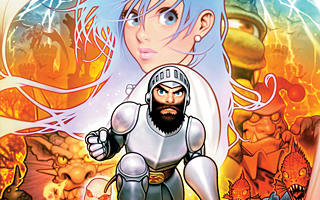
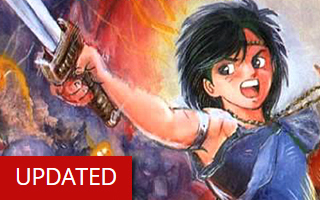
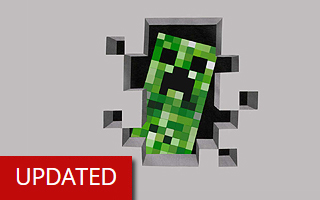
Do you agree with this list? Let us know what you think by leaving a comment below. Your opinion matters!